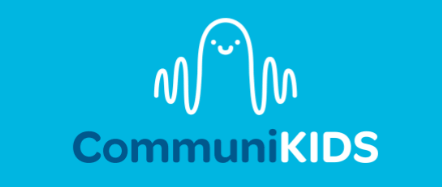Sensory Differences and Speech
Sensory differences are the difficulties an individual has in processing sensory information from the environment. A diagnostic characteristic of autism, people with sensory differences can be over or under-stimulated by input from their environment such as noises, touch, or sight.
Imagine walking into a classroom after coming in from a dark room. The lights are on full, and your eyes find it difficult to adjust. You can feel a headache forming, but the lights don’t get any dimmer. In the meantime, your teacher is talking and teaching the class. It would be pretty challenging to focus, right?
This is just one example of how sensory difficulties can make everyday situations challenging. For some people with sensory difficulties, they might find it challenging to process other sensory inputs at the same time, such as the sound of the teacher talking or the feel of their clothes against their skin. This can make it very hard to pay attention and engage. For some neurodivergent individuals, this happens frequently and sensory dysregulation can become a big barrier to many activities.
Children with sensory differences can be hypo- or hypersensitive.
Hypersensitive. A small amount of sensory input can cause a child to become dysregulated and overly alert. This can be displayed in behaviours such as running away, screaming, or hiding.
Hyposensitive. A large amount of sensory input is required for the child to respond. This can be displayed through lethargy or disinterest.
Sensory Strategies
For therapists, teachers, parents, and any other adults in the child’s life, there are a number of strategies we can use to help kids with sensory differences engage in everyday environments.
Give a heads-up. This can be done verbally or visually, such as saying ‘I’m going to start vacuuming now’.
Acknowledging difficulties. Acknowledge any difficulties the child has with adjusting to the new sensory input.
Supporting self-awareness: Ask the child to tell you more about why they like things a certain way. For example, ‘I noticed you like it when the house is quiet. Can you tell me more about that?’
Problem solving: Talk to the child and problem solve together. For example, say, ‘I need to vacuum to clean the house. What can we do so we both get what we need?’
Sensory and Speech
As speech therapists, implementing sensory strategies is important as dysregulation can become a barrier to communication success. Given this, your child’s speech therapist can also implement strategies to promote engagement and increase communication.
Discuss the child’s sensory differences together. Parents are the ones who know the child best, and may be able to pick up sensory differences early on. Having a discussion around these and any strategies can be a great way to ensure sensory needs are met.
Adapt activities to the client. Different clients will have different sensory needs and, as such, will find different activities beneficial. Planning activities to include certain sensory modalities and including activities to promote regulation is a great way to promote regulation.
Use a team approach. If the child has an OT, they can be a great source of knowledge and advice when it comes to regulation.
Listen and observe. During the session, the speech therapist can watch for clues that sensory needs are - or are not - being met. This allows activities to be adjusted accordingly, ensuring continued regulation and engagement.
References
Kirby, A. V., Bilder, D. A., Wiggins, L. D., Hughes, M. M., Davis, J., Hall-Lande, J. A., Lee, L-C., McMahon, W. M., & Bakian, A. V. (2022). Sensory features in autism: Findings from a large population-based surveillance system. Autism Research. https://doi.org/10.1002/aur.2670 [open access]
Wiggins, L. D., Tian, L. H., Rubenstein, E., Schieve, L., Daniels, J., Pazol, K., DiGuiseppi, C., Barger, B., Moody, E., Rosenberg, S., Bradley, C., Hsu, M., Rosenberg, C. R., Christensen, D., Crume, T., Pandey, J., & Levy, S. E. (2021). Features that best define the heterogeneity and homogeneity of autism in preschool-age children: A multisite case-control analysis replicated across two independent samples. Autism Research. https://doi.org/10.1002/aur.2663
